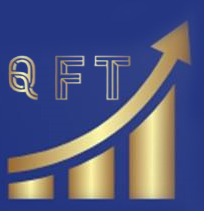Trading in financial markets is a dynamic endeavor, with various styles catering to different risk appetites, time horizons, and market conditions. Successful traders often find a style that aligns with their strengths and preferences. In this exploration, we delve into some popular trading styles that have defined the landscape of financial markets.
1. Day Trading:
Day trading involves executing multiple trades within a single day, with the aim of profiting from intraday price movements. Day traders rely on technical analysis, charts, and real-time market data to make quick decisions. This style demands a keen understanding of market trends and the ability to react swiftly to changing conditions.
2. Swing Trading:
Swing trading seeks to capture short to medium-term price swings within a trend. Traders hold positions for a few days to weeks, aiming to profit from anticipated price movements. Technical analysis plays a crucial role in identifying entry and exit points, making this style suitable for those with a moderate risk tolerance.
3. Scalping:
Scalping involves making numerous small trades to exploit minor price fluctuations. Traders seek to profit from short-term market inefficiencies and aim to take advantage of small price changes. Scalping requires discipline, a high level of focus, and the ability to execute trades swiftly.
4. Position Trading:
Position trading takes a long-term approach, with traders holding positions for weeks, months, or even years. This style often relies on both fundamental & technical analysis to identify assets with strong growth potential. Position traders are less concerned with short-term market fluctuations, focusing on the overall trend.
5. Algorithmic Trading:
Also known as algo trading, this style involves using computer algorithms to execute trades based on predefined criteria. Algo traders leverage quantitative models, statistical arbitrage, and other strategies to automate trading decisions. This style requires a strong understanding of programming and quantitative analysis. HFTs (High frequency trading firm) deploy this form of trading with high volumes, currently retail traders also actively do algo trading and it is gaining traction.
6. News Trading:
News trading involves making decisions based on market-moving news and events. Traders closely follow economic indicators, earnings reports, and geopolitical events, aiming to capitalize on the immediate market reactions to significant news releases.
Selecting Your Style:
Choosing the right trading style is a critical decision that depends on individual preferences, risk tolerance, and time commitments. It’s common for traders to experiment with different styles before finding the one that suits them best. A beginner can start with higher frame based trading like positional trading and then learn scalping as scalping trading is shorter time frame and considered most difficult. Additionally, many traders adopt a hybrid approach, combining elements of various styles to create a personalized strategy.
Conclusion: The world of trading offers a spectrum of styles, each with its own set of challenges and rewards. Success often lies in aligning your chosen style with your strengths, preferences, and risk tolerance. Whether you prefer the fast-paced action of day trading or the patient approach of position trading, mastering the intricacies of your chosen style is essential for navigating the complexities of financial markets.











